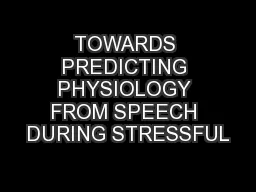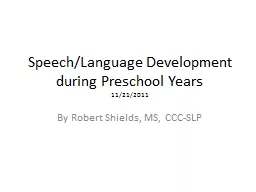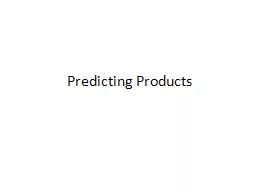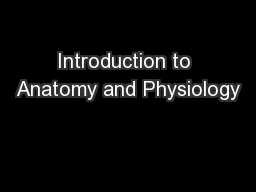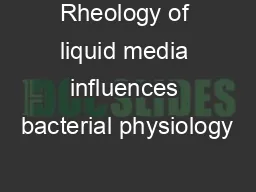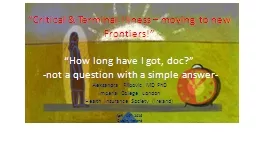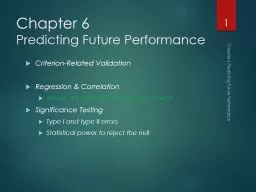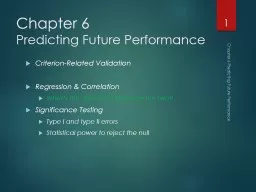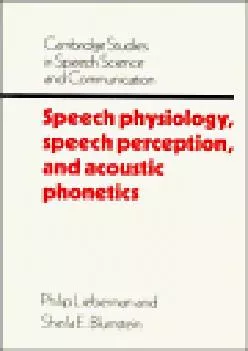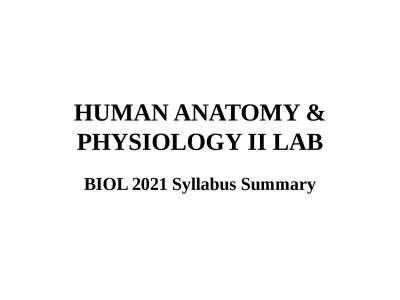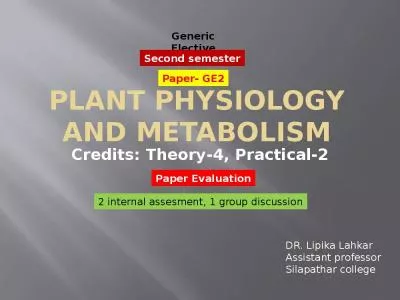PPT-TOWARDS PREDICTING PHYSIOLOGY FROM SPEECH DURING STRESSFUL
Author : envrrolex | Published Date : 2020-06-13
CONVERSATIONS HEART RATE AND RESPIRATORY SINUS ARRHYTHMIA Arindam Jati 1 Paula G Williams 2 Brian Baucom 2 Panayiotis Georgiou 1 1 University of Southern California
Presentation Embed Code
Download Presentation
Download Presentation The PPT/PDF document "TOWARDS PREDICTING PHYSIOLOGY FROM SPEEC..." is the property of its rightful owner. Permission is granted to download and print the materials on this website for personal, non-commercial use only, and to display it on your personal computer provided you do not modify the materials and that you retain all copyright notices contained in the materials. By downloading content from our website, you accept the terms of this agreement.
TOWARDS PREDICTING PHYSIOLOGY FROM SPEECH DURING STRESSFUL: Transcript
CONVERSATIONS HEART RATE AND RESPIRATORY SINUS ARRHYTHMIA Arindam Jati 1 Paula G Williams 2 Brian Baucom 2 Panayiotis Georgiou 1 1 University of Southern California Department of Electrical Engineering CA USA. March 28, 2014. Association of Anesthesia Clinical Directors. Nashville, TN. Vikram . Tiwari, . Ph.D. .. . William R Furman, MD . Warren S Sandberg, MD, Ph.D.. Department . of . Anesthesiology, Vanderbilt University. But Who Serves Us?. Scott M. Williams, PhD LMFT. Family and Consumer Sciences, CSUN. December 17, . 2010. ©2010. The Serving Professional. “We must take care of . ourselves. , so we can take care of . 11/21/2011. By Robert Shields, MS, CCC-SLP. Speech/Articulation. At 3 years of age children’s speech should be approximately 75-80% intelligible. Parents generally understand more of their speech because they are around them more. Predicting products. Based on the reactants alone, you should be able to . Predict the products. Write them correctly. Balance the final equation. There are some general guidelines to follow for each type of reaction. . What’s stressful about college?. Everything!. Yeah, now you get it.. The following is just a glimpse of college life.. This is what can happen if you don’t take time for yourself.. What can you do to prevent this?. Syllabus. Course design. Blackboard. Grading scheme. Class rules and policies. New edition of textbook came out this fall!. (2. nd. Edition). Old edition. is okay to use. Lab Manual. (MUST PURCHASE). Maja. . Borić. , . Tjaša. . Danevčič. , David . Stopar. University of Ljubljana, Biotechnical Faculty. Importance of rheology in biotechnological processes. Rheology. . studies the flow of liquids or soft matter. “How long have I got, doc?”. . -not . a question with a simple . answer-. Aleksandra Filipovic MD PhD. Imperial College London. Health Insurance Society (Ireland). . April 14. th. 2016. Dublin, Ireland. ECE 539. Presented: 12/14/2010. Joseph Quigley. Objective. Train a multi-layer . perceptron . network to predict the regular season records of NFL Football teams. (Within a range.). Wins in a season:. Criterion-Related Validation. Regression & Correlation. What’s the difference between the two?. Significance . Testing. Type I and type II errors. Statistical power to reject the null. . Chapter 6 Predicting Future Performance. Criterion-Related Validation. Regression & Correlation. What’s the difference between the two?. Significance . Testing. Type I and type II errors. Statistical power to reject the null. . Chapter 6 Predicting Future Performance. This textbook has been carefully designed to provide a thorough introduction to the study of speech. It assumes no technical background, and students from a wide variety of disciplines contributing to this new and exciting field will find the exposition fully accessible. Each chapter progresses from simple examples to more detailed discussions of recent primary research and concludes with stimulating problem sets. All topics essential for a basic understanding of the field are included: the physiological, biological, and neurological bases of speech the physics of sound the source-filter theory of speech production and the underlying principles of electrical and computer models of speech production. BIOL 2021 Syllabus Summary. Course Information. Credit Hours:. Biology 2020 (lecture) = 3, Biology 2021 (lab) = 1. You must register for lecture and lab if this is the first time you are taking the course. If you are registering for the evening sections you must register for both the evening lecture and lab sections.. Credits: Theory-4, Practical-2. DR. Lipika Lahkar. Assistant professor. Silapathar. college. Paper Evaluation. 2 internal . assesment. , 1 group discussion. Generic Elective. Second semester. Paper- GE2.
Download Document
Here is the link to download the presentation.
"TOWARDS PREDICTING PHYSIOLOGY FROM SPEECH DURING STRESSFUL"The content belongs to its owner. You may download and print it for personal use, without modification, and keep all copyright notices. By downloading, you agree to these terms.
Related Documents

